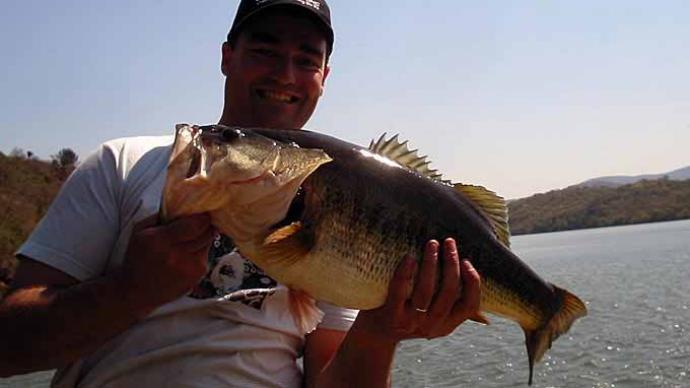
An often-discussed topic on the Pond Boss Forum is fish size and growth, including what causes significant differences from place to place. Of course, we all know that having enough food and good water quality are keys. But all too often, even with good food and water, considerable differences are exhibited, and inquiring minds want to know why. This is when someone comments, "It all depends." "Depends on what?" quickly follows.
Fisheries Scientists have been studying that question for decades, and a few factors are discussed below.
For fisheries science, bioenergetics is a critical tool for measuring growth. Bioenergetics models quantify energy flow through an organism by accounting for energy expenditures due to metabolism, waste loss, and somatic and gonadal growth. These models are widely popular with managers and researchers and are frequently used to estimate fish feeding and growth. The concept is that easy food eaten (energy in) equals maintenance (energy used in essential body functions) plus growth (size and weight gain). The problem is finding a formula that accurately reflects all the variables in every location. Then, we can see what affects growth by looking at the variables.
One interesting example is found in a paper titled Influence of Feeding History on Metabolic Rates in Fishes: Evidence for Metabolic Compensation in Largemouth Bass (Micropterus salmoides) by Steven H. Ranney, Master of Science Wildlife and Fisheries Sciences (Fisheries Option) South Dakota State University 2008. One of its findings is that physiological responses to environmental factors such as temperature can vary between stocks of the same species and may be linked to differences in latitude. That is how far north the water is located can affect size, growth, and lifespan.
You must understand fish's energy needs and metabolism to get big, healthy fish. Metabolism is a critical component in fish energy consumption and, thus, in the formula. One way to measure energy use is by measuring the oxygen used. The fish size and water temperature primarily influence metabolism. However, other factors influence the standard metabolic rate of fish. Factors such as salinity, stress, water toxicity, daily light period, and stock differences can positively and negatively affect fish oxygen consumption. Although they can be significant, these effects are generally not incorporated into fish bioenergetics models to estimate metabolism. As a result, the accuracy of bioenergetics models can be hampered because of incomplete measuring of factors incorporated into the model.

The study points out that environmental factors such as available oxygen, salinity, toxicity, and pH can influence metabolic rates, resulting in a -60% to +120% change in standard metabolic rate. Also, biological factors such as stress, population numbers, seasonal effects, and daily biorhythms can significantly influence the standard metabolic rate in fish.
Because of their potential to influence metabolism across a wide range of species and locations, these biological factors need to be considered in developing fish energy needs.
While not all species are affected similarly based on latitude, many are. Walleye growth and metabolism, for example, are impacted by latitude. An interesting study on this subject is Differences in Growth. Consumption and Metabolism among Walleyes from Different Latitudes by Tracy L. Galarowicz and David H. Wahl in Transactions of the American Fisheries Society, Jan 9, 2011. This study examined whether physiological differences exist among walleye populations as a function of latitude. They compared the metabolic rates, food consumption, relative growth, and conversion efficiency among walleyes from Arkansas, Missouri, Wisconsin, and Alberta, Canada, over a range of temperatures (5-25°C). The authors noted that the annual growth of many fish species, including walleyes, is inversely related to latitude. Adult walleyes from lower latitudes generally exhibit more significant growth, mature earlier, and have shorter life spans. Because environmental conditions greatly influence these life history factors, it isn't easy to attribute differences solely to genetic variation. Variation in growth among populations may be attributable, in part, to adaptation to local temperature regimes. Many studies have examined the physiological differences among stocks, but few have examined the consequences of these adaptations on growth. Bioenergetics models are interesting for examining energy relationships, but these models are compromised when inappropriate parameters are used.
The authors include a wise and apt warning about stocking. Walleye populations to be established or maintained with supplemental stockings should not be transported from different regions. Typically, the potential uniqueness of fish populations is not considered in stocking efforts. Introductions of fish with different physiological characteristics may negatively affect growth and survival and the genetic integrity of natural populations may be compromised by these introductions

You might ask how growth rates give different results in different locations. A study titled Latitudinal Growth Effects on Predator-Prey Interactions between Largemouth Bass and Bluegills in Ponds. North American Journal of Fisheries Management 5:227-232,1985 by Timothy Modde, and Charles G. Scalet is instructive. The study noted. Largemouth bass growth size exhibited a significant inverse relationship to latitude throughout the Great Plains states, while bluegill weights from the same states exhibited no significant difference. Northern Largemouth bass grew slower and failed to reach the maximum sizes attained by southern Largemouth bass. Adult bluegill populations in southern latitudes were nearly twice as vulnerable to Largemouth bass predation as bluegills in northern ponds. Because bluegill growth rates were less affected by latitude than Largemouth bass, bluegill length increases were faster than predator length increases. This leads to an imbalance in the population structure which can result in stunting the prevalence of bluegill stunting up north and largemouth overcrowding in the south.
Latitude affects several factors, including temperature, photoperiod (daily light period), and metabolism, all of which affect growth. In addition, factors such as salinity, stress, water toxicity, and stock differences also can affect growth.
Reprinted with permission from Pond Boss Magazine


